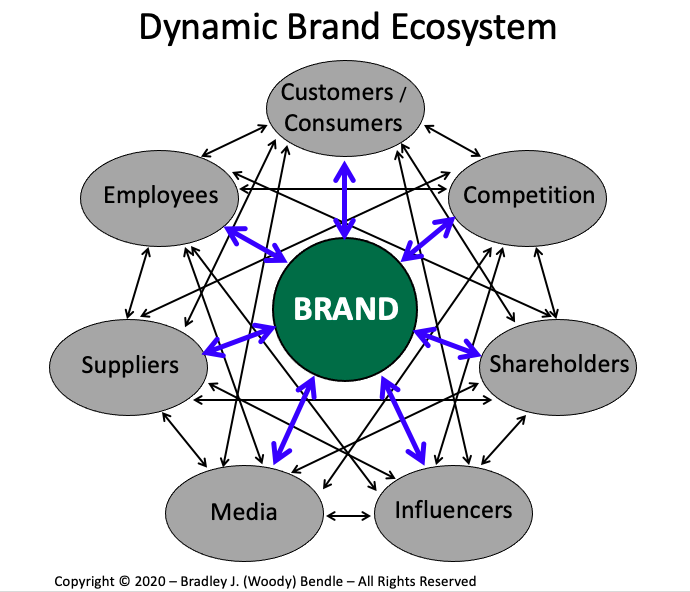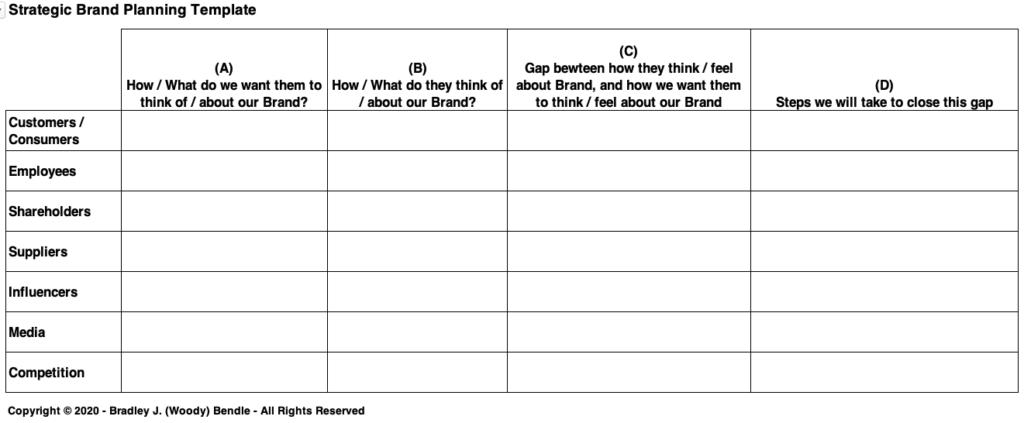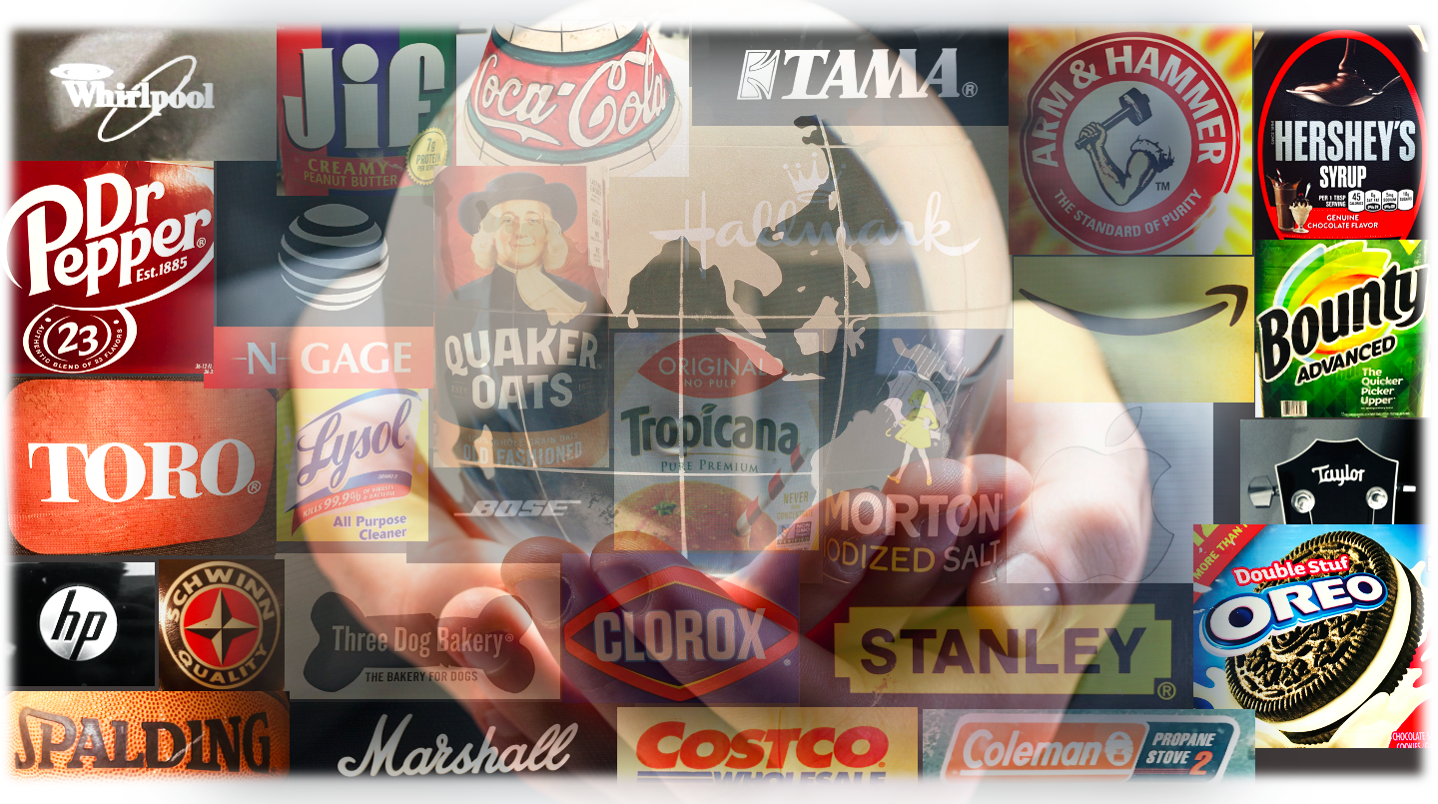“Your brand is the single most important investment you can make in your business” – Steve Forbes
In today’s age, it is amazing that this statement is subject to debate. But surprisingly, many organizations still do not place much, if any value on managing or building their brand.
Let’s think about some conversations many of us have likely had over the past several weeks.
“The next time you’re at the store, could you pick up some Clorox wipes? Oh, and we’re running low on bleach, so get some of that as well – but only the Splash-Less type. If they don’t have any in stock, don’t get the store brand.”
“Dad! What’s the deal with this toilet paper? Why didn’t you get Charmin?”
“We’re going to have to start wearing masks now when we go out. I just checked online and the Lowe’s up the street has some of those 3M masks in stock right now.”
“Did you see the news that they’re having to shut down the big Hormel plant in Alma? We don’t have any of that in the fridge right now do we?”
Let’s admit it. Brands matter!
Throughout my career, I’ve had the opportunity to be a part of, and work with organizations that lived and breathed Brand; as well as some that couldn’t be bothered by it. And in my opinion, the difference between the two boiled down to three things:
1. Fundamental lack of understanding about what Brand actually is and why it matters
2. Misperceptions – Corporate strategy and planning are the realm of “left-brained numbers people” and Brand strategy (if an organization even has one) is for “right-brained touchy-feely marketing types”
3. Complexity – Brands are abstract, and don’t easily fit into financial spreadsheets
I get it, the concept of Brand can be difficult to get your head around. But that doesn’t mean that Brand strategy and Brand Management can be ignored.
Like Steve Forbes said, your brand is your most important investment; and I would add your organization’s single greatest asset. And as such, your company’s strategy should be all about building and managing your brand.
So what is a Brand?
Every single one of us can easily name dozens of brands, including our “favorite” brands. We can describe these brands and frequently make decisions because of them. So, while brands clearly play important roles in our lives, defining a brand is where many of us get hung up.
Through studying how consumers and organizations develop, manage, think about, and relate to brands, I’ve developed the following definition:
A Brand is something that provides, and is both identity and meaning. It is a continual interpretation that exists as a result of that which is conveyed by an entity through its communications, products and/or services, and that which is understood by those who interact with that entity’s communications, products and/or services.
That seems pretty abstract and complex, I’ll admit. Let’s simplify it to an organization’s brand being:
- Who it is
- What it stands for or represents
- Why it exists
- How it behaves, communicates, and/or operates
- How it is, and how it wants to be seen and/or thought of
For those interacting with (i.e., purchasing, using, consuming) a brand, it is:
- A commitment or promise by or from the brand itself
- An aid for decision making
- An intrinsic and extrinsic reflection of who they are
- A statement about what they value and believe in
- A tacit or explicit signal about how they see themselves and how they want to be seen by others
The next layer of complexity has to do with the fact that Brands are not completely within an organization’s control. While companies or individuals create brands, once they’re out in the wild, they exist in a continuously evolving ecosystem, That is, what a brand is and becomes is a result of an intricate network of interactions between and amongst an array of constituents (shown below).

Brands directly interact with and influence perceptions for a number of different constituents (the blue arrows). These constituents influence and affect the brand (as well as each other) through relationships of varying strength. And over time, the full power and impact of a brand is the culmination of every single direct and indirect interaction within the brand ecosystem.
This has two implications:
1. Once a brand is launched (as noted earlier), the originator no longer fully owns it. It is shared by all who directly and/or indirectly interact with it.
2. While the brand’s originator does not fully own the brand, it retains absolute responsibility for how the brand is viewed – now and in the future.
It is precisely due to this complexity that a company’s strategy SHOULD be its brand strategy and vice versa.
Strategic Brand Planning Tool
So with the definition addressed, let’s take a look at a tool I’ve developed and refined over the years to help organizations think about, and create their brand strategy:

The first step is to identify your Brand’s key constituents (rows of the table). To do this, think about these two questions:
- Who are all the parties that interact with your brand?
- Who has a say in your brand’s future?
After creating your own list of brand constituents, begin to work through each column.
Column A – Think about how you would like each constituent group to describe your Brand. What should your brand stand for with each of them? How should it be known? Note – this is an internal exercise since you have to answer how and what you want others to think about your brand.
Column B – How do each of these different groups actually think about, or describe your brand? What are they saying about it to others? Are you regarded positively by some and negatively by others? Interviews, surveys, reviews and social media sites are great sources for this.
Column C – This column pinpoints areas with differences between how you want your brand to be thought of, and how it is currently regarded. Some differences will be subtle, and others could be rather large. Additionally, this column can be quantitative and/or qualitative.
Column D – After identifying areas with meaningful perceptual differences, outline things your organization can or will do to close these perception or image gaps. Are these gaps related to product, service, experience, communications, processes, etc.?
As you work through this brand tool, some cells will be easier than others to complete. Only you can determine whether it is worth the effort to collect the information needed. After using this tool many times, I’m confident however you will identify several things important to your brand’s future that warrant further discussion and attention.
Good (Company) to Great (Brand)
It’s likely that our current pandemic crisis isn’t the first challenge your organization has had to overcome; nor will it be the last. And times of crisis are terrific opportunities for introspection, prioritization and strategic realignment.
At this point, I think many of us can agree that the current pandemic crisis has underscored just how important Brands really are.
Consumers increasingly want to know what a brand stands for, they want to know that they can count on them, and they are rewarding brands that actually have a clear point of view and take a stand.
These are common characteristics of Great Brands.
Great Brands connect by providing a deeper sense of identity and meaning.
Great Brands are different; they are one-in-a-million!
Great Brands don’t happen by accident!
Great Brands are the result of great, well-executed brand strategies!
And you never know, with some great vision and execution, your brand could just be the next one to earn a prominent place on someone’s body.



Leave a Reply